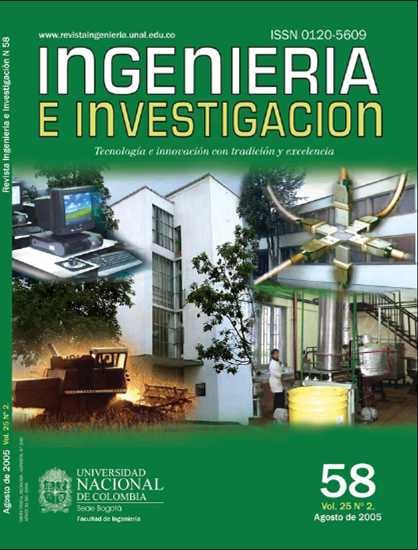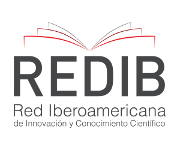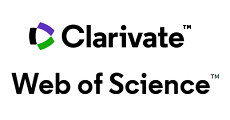Optimising a shaft’s geometry by applying genetic algorithms
Optimización de la geometría de un eje aplicando algoritmos genéticos
DOI:
https://doi.org/10.15446/ing.investig.v25n2.14631Keywords:
multiobjective optimisation, generic algorithms, mechanical design, shafts (en)optimización multiobjetivo, algoritmos genéticos, diseño mecánico, ejes (es)
Downloads
Many engineering design tasks involve optimizing several conflicting goals; these types of problem are known as Multiobjective Optimization Problems (MOPs). Evolutionary techniques have proved to be an effective tool for finding solutions to these MOPs during the last decade. Variations on the basic genetic algorithm have been particularly proposed by different researchers for finding rapid optimal solutions to MOPs. The NSGA (Non-dominated Sorting Genetic Algorithm) has been implemented in this paper for finding an optimal design for a shaft subjected to cyclic loads, the conflicting goals being minimum weight and minimum lateral deflection.
Muchos problemas de diseño de ingeniería involucran la maximización o minimización de más de una función objetivo. Para la solución de este tipo de problemas, conocidos como Problemas de Optimización Multiobjetivo (POM), en la última década las técnicas evolutivas han demostrado ser una herramienta efectiva y eficiente.
Particularmente, varios algoritmos genéticos han sido propuestos por diversos autores, los cuales permiten hallar en un tiempo corto soluciones óptimas a problemas multiobjetivo. En este artículo se desarrolla una aplicación del algoritmo NSGA (Non-dominated Sorting Genetic Algorithm) que permite obtener geometrías óptimas para el eje de una máquina herramienta sometido a cargas cíclicas, para el cual se busca minimizar simultáneamente su peso y su deflexión lateral máxima.
References
Andersson, J., “Multiobjective Optimization in Engineering Design”, tesis presentada al Institute of Technology - Linkopings Universitet, para optar al grado de doctor en filosofía, Suiza, 2001.
Goldberg, D., “Genetic Algorithms in Search, Optimization and Machine Learning”, Reading, Massachusetts: Addison-Wesley Publishing Company (ed.), Estados Unidos de Norteamérica, 1989.
Gen, M.; Cheng, R., “Genetic algorithms and engineering design”, John Wiley and Sons (ed.), Estados Unidos de Norteamérica, 1997.
Knowles, J., “Local-search and hybrid evolutionary algorithms for Pareto optimization”, tesis presentada a la University of Reading para optar al grado de doctor en filosofía, Reino Unido, 2002.
http://www.lania.mx/ccoello/EMOO/EMOObib.html. Consultada el 6 de junio de 2004.
Holland, J., Adaptation in Natural Artificial Systems, Ann Arbor: University of Michigan Press (ed.), Estados Unidos de Norteamérica, 1975.
Osyezka, A.; Krenich, S.; Kards, J., Optimum Design of Robot Grippers Using Genetic Algorithms, Department of Mechanical Engineering, Cracow University of Technology, Polonia, 1998.
Deb, K., “Evolutionary Algorithms for Multi-Criterion Optimization in Engineering Design, Proceedings of evolutionary algorithms in engineering and computer science”, (EUROGEN-99), 1999.
Deb, K.; Chaudjuri, S., Automated Discovery of innovative designs of mechanical components using evolutionary multiobjective algorithms, Indian Institute of Technology Kanpur, KanGal technical report number 2004006, India, 2004.
Deb, K.; Goel, T., Multi-objective evolutionary algorithms for engineering shape design, Indian Institute of Technology Kanpur, KanGal technical report number 200003, India, 2000.
Lozano, M., “Aplicación de técnicas basadas en lógica difusa para la mejora del comportamiento de los algoritmos genéticos con codificación real”, tesis presentada a la Universidad de Granada para optar al grado de doctor en filosofía, España, 1996.
Missoum, S., “Optimization of a Gearbox using Mathematical Programming and genetic algorithms”, Laboratoire de Génie Mécanique de Tolouse, Francia, 2000.
Mitchell, M., An Introduction to Genetic Algorithms, MA: MIT Press (ed.), Estados Unidos de Norteamérica, 1995.
Norton, R., Diseño de máquinas, Prentice Hall (ed.), México, 1999.
Sánchez, G., “Diseño y evaluación de algoritmos genéticos multiobjetivo en optimización y modelización difusa”, tesis presentada a la Universidad de Murcia para optar al grado de doctor en filosofía, España, 2002.
Shigley, J., Mischke, C., Diseño en ingeniería mecánica, McGraw - Hill (ed.), sexta edición, México, 2002.
Vélez, J.; Delgadillo, A.; Madrid, J., “Ampliación de UN-Genético: una librería en C++ de algoritmos genéticos con codificación hibrida”, trabajo de grado presentado a la Universidad Nacional de Colombia para optar al grado de ingeniero electricista, Colombia, 2004.
Woon, S.; Querin, Y., Shape Optimization Using Genetic Algorithms, Department of Aeronautical Engineering, University of Sydney, Australia, 1999.
Zydallis, J., “Explicit building-block multiobjective genetic algorithms: theory, analysis and development”, tesis presentada al Air Force Institute of Technology para optar al grado de doctor en filosofía, Estados Unidos de Norteamérica, 2003.
How to Cite
APA
ACM
ACS
ABNT
Chicago
Harvard
IEEE
MLA
Turabian
Vancouver
Download Citation
CrossRef Cited-by
1. Juan P. Guamán, Hugo E. Crespo, César A. Paltán, Jorge I. Fajardo. (2024). Propuesta de mejora en el sistema estructural de un cuadro rígido de bicicleta de montaña de 15” R29, mediante FEA y optimización geométrica. Ingenius, (31), p.106. https://doi.org/10.17163/ings.n31.2024.09.
2. M. A. Rodriguez-Cabal, J. D. Betancur-Gómez, L. F. Grisales-Noreña, Oscar Danilo Montoya, Diego Hincapie. (2021). Optimal Design of Transmission Shafts Using a Vortex Search Algorithm. Arabian Journal for Science and Engineering, 46(4), p.3293. https://doi.org/10.1007/s13369-020-05121-1.
Dimensions
PlumX
Article abstract page views
Downloads
License
Copyright (c) 2005 María Alejandra Guzmán, Alberto Delgado

This work is licensed under a Creative Commons Attribution 4.0 International License.
The authors or holders of the copyright for each article hereby confer exclusive, limited and free authorization on the Universidad Nacional de Colombia's journal Ingeniería e Investigación concerning the aforementioned article which, once it has been evaluated and approved, will be submitted for publication, in line with the following items:
1. The version which has been corrected according to the evaluators' suggestions will be remitted and it will be made clear whether the aforementioned article is an unedited document regarding which the rights to be authorized are held and total responsibility will be assumed by the authors for the content of the work being submitted to Ingeniería e Investigación, the Universidad Nacional de Colombia and third-parties;
2. The authorization conferred on the journal will come into force from the date on which it is included in the respective volume and issue of Ingeniería e Investigación in the Open Journal Systems and on the journal's main page (https://revistas.unal.edu.co/index.php/ingeinv), as well as in different databases and indices in which the publication is indexed;
3. The authors authorize the Universidad Nacional de Colombia's journal Ingeniería e Investigación to publish the document in whatever required format (printed, digital, electronic or whatsoever known or yet to be discovered form) and authorize Ingeniería e Investigación to include the work in any indices and/or search engines deemed necessary for promoting its diffusion;
4. The authors accept that such authorization is given free of charge and they, therefore, waive any right to receive remuneration from the publication, distribution, public communication and any use whatsoever referred to in the terms of this authorization.



























